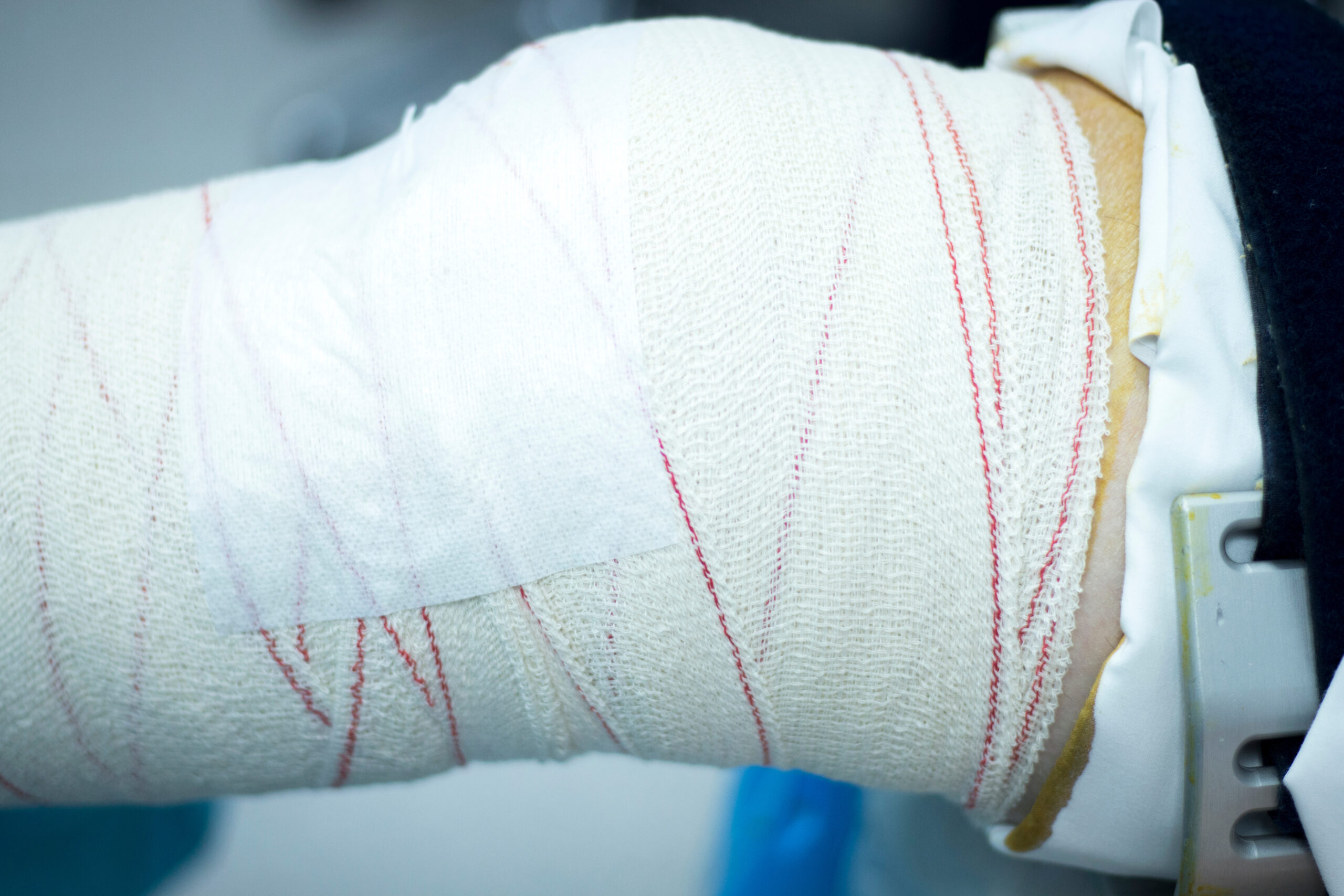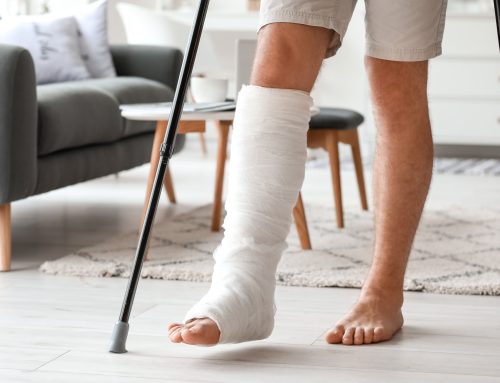When faced with a broken bone, most people’s immediate concern is the pain and the healing process. However, an often-overlooked aspect of bone fractures warrants attention – the risk of blood clots. Understanding this link is crucial for anyone undergoing bone fracture recovery. In this blog, we’ll explore the link between broken bones and blood clots.

Understanding Bone Fractures
A bone fracture, regardless of its severity, is a significant injury. It triggers a complex biological response as the body jumps into action to repair the damage. This process involves various cells and can impact your overall health.
Fractures also vary in severity and type. From simple, clean breaks to complex, multiple fractures, each case requires a unique approach to treatment and care.
When a bone is broken, the body's healing process involves increased cell activity and blood flow to the area. This can sometimes lead to the development of blood clots, particularly in cases of significant trauma or immobilization.
How Fractures Can Lead to Clots
A blood clot is a clump of blood that has changed from a liquid to a gel-like state. While clotting is a normal and necessary process to prevent excessive bleeding, unintended clotting inside the veins can be dangerous and potentially life-threatening. There are several factors that can increase the risk of blood clots you should be aware of.
- Immobility: One of the primary risk factors for blood clots is immobility, which can occur after a fracture, especially when a limb is immobilized in a cast or sling.
- Inflammation: The body's response to a fracture often involves inflammation at the site of the injury. This inflammatory process can enhance the blood's tendency to clot, especially in the veins near the affected area, further increasing the risk of clot formation.
- Surgery: If surgery is required to fix the broken bone, the risk of developing blood clots may increase due to prolonged periods of inactivity during recovery.
Preventing Blood Clots After Fractures
Recognizing the heightened risk of blood clots after fractures, it becomes essential to adopt proactive strategies to mitigate this risk. Preventing blood clots involves combining physical activity, medical interventions, and the incorporation of groundbreaking technologies. Each of these preventative measures plays a critical role in reducing the likelihood of clot formation and enhancing the overall healing process. Let's explore these strategies to understand how movement, exercise, medication, and innovative technologies like Low-Intensity Pulsed Ultrasound (LIPUS) contribute to safer and more effective post-fracture recovery.
Movement and Exercise
The role of physical activity in the recovery process cannot be overstated. As advised by a healthcare professional, engaging in light exercises and movements is crucial for stimulating blood circulation and preventing blood stagnation, which can lead to clot formation. These exercises are often tailored to your specific condition and recovery stage, ensuring safety and effectiveness. They aid in maintaining muscle tone and joint flexibility and encourage blood flow through the veins, significantly reducing the risk of blood clots. Incorporating such activities into your daily routine, even in a limited capacity, can be vital in ensuring a smooth and safe recovery from a fracture.
Medication
In managing the risk of blood clots, especially after a fracture, the use of medication plays a pivotal role. Doctors may prescribe blood thinners or anticoagulant medications, which work by decreasing the blood's ability to clot. These medications are particularly beneficial for patients at a higher risk of clotting due to immobility or other underlying health conditions. It's essential to follow the prescribed dosage and schedule carefully, as these medications need to be managed precisely to balance the risk of clotting against the risk of excessive bleeding. Regular monitoring and consultations with healthcare professionals ensure the medication effectively contributes to a safe recovery process.
Integrating Advanced Technology
In the realm of fracture healing, the integration of advanced technology plays a transformative role. One such innovation is Low-Intensity Pulsed Ultrasound (LIPUS), a non-invasive therapeutic approach revolutionizing the recovery processes. LIPUS delivers low-frequency ultrasound waves directly to the fracture site, stimulating the bone's cellular mechanisms and enhancing tissue repair and regeneration. This technology has been particularly effective in accelerating the healing process of broken bones, which in turn reduces the period of immobility that can lead to blood clot formation. The adoption of LIPUS in treatment plans exemplifies the shift towards using cutting-edge technology to expedite healing and improve overall patient outcomes and safety during the recovery phase.
The Role of Effective Healing in Preventing Clots
One key factor in preventing blood clots is to facilitate faster fracture healing, reducing immobility time and the associated risks.
As we delve into enhancing the healing process, it's important to consider the role of advanced medical technologies. These innovations can significantly accelerate recovery, indirectly reducing the risk of complications such as blood clots.
As we explore the options for advanced fracture healing, the Melmak LIPUS device stands out for a few reasons:
- The Science Behind LIPUS: LIPUS technology works by delivering low-intensity pulsed ultrasound waves directly to the fracture site. This process stimulates the bone's cellular activity, enhancing the body's natural healing process.
- Proven Results with Melmak: The Melmak device, utilizing LIPUS technology, has a proven track record. Studies have shown that it can heal non-union fractures by up to 86% and accelerate the healing of fresh fractures by an average of 38%.
- Convenience and Safety: Designed for self-treatment, the Melmak device can be used in the comfort of your home or office. With no known side effects and a simple operation that requires just a press of a button for a 20-minute daily treatment, it offers a safe, convenient way to enhance your recovery.
While the link between broken bones and blood clots is a serious concern, understanding this connection and taking proactive steps can significantly reduce the risk. By combining traditional medical care with advanced technologies like the Melmak LIPUS device, patients can experience faster and safer recovery. Not only does this approach aid in healing the fracture itself, but it also minimizes the period of immobilization, thereby reducing the risk of blood clot complications. Embrace the power of modern healing technology to ensure a smoother, quicker return to your daily life.
Interested in learning more about the Melmak LIPUS device and how it can aid in your recovery? Contact us for more information and take the first step towards a faster, safer healing journey.
Have you ever broken a bone or experienced a blood clot? What did you feel during the healing process? Share your story with our readers in the comments below.






Leave A Comment